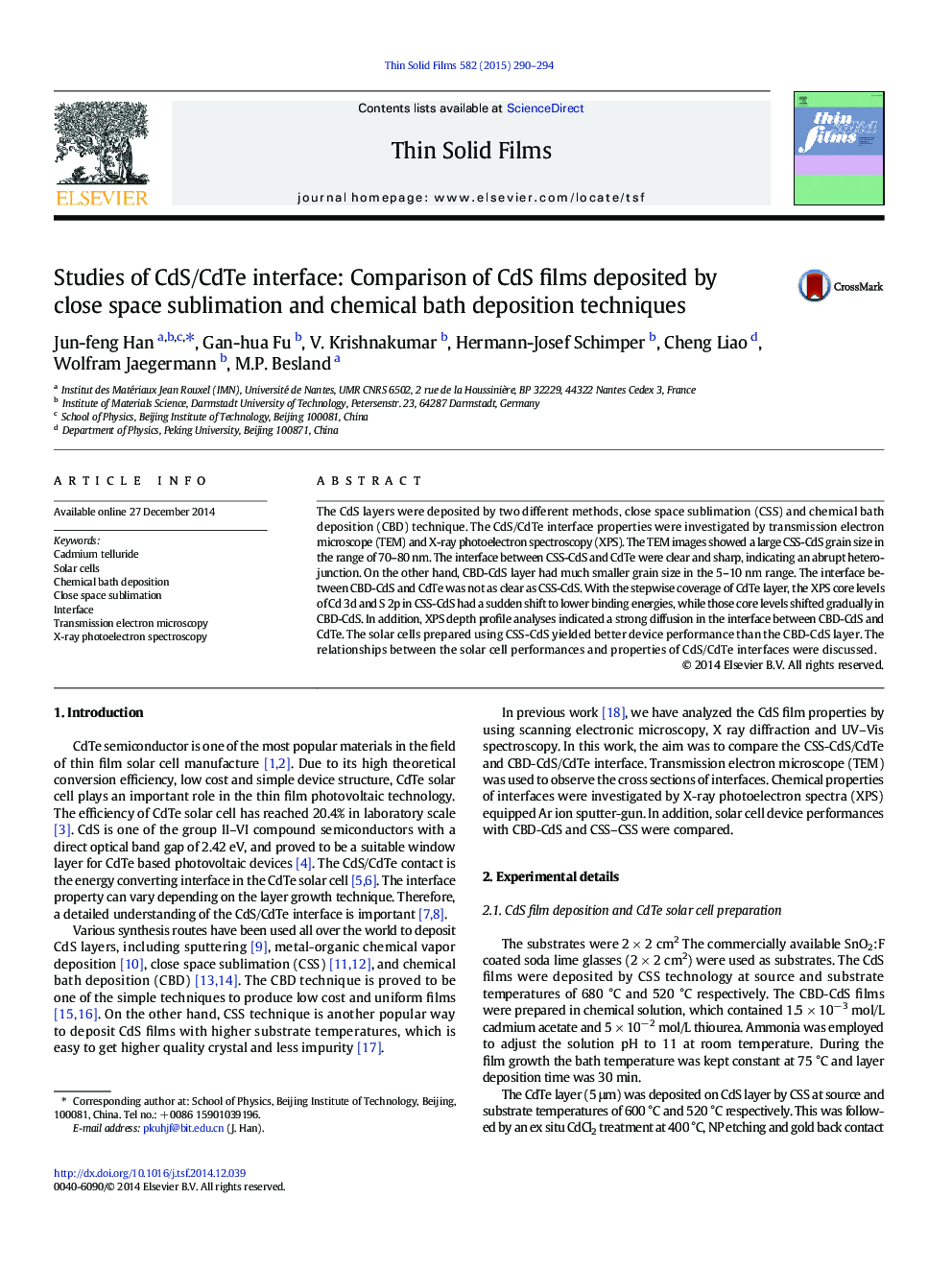| Article ID | Journal | Published Year | Pages | File Type |
|---|---|---|---|---|
| 8034440 | Thin Solid Films | 2015 | 5 Pages |
Abstract
The CdS layers were deposited by two different methods, close space sublimation (CSS) and chemical bath deposition (CBD) technique. The CdS/CdTe interface properties were investigated by transmission electron microscope (TEM) and X-ray photoelectron spectroscopy (XPS). The TEM images showed a large CSS-CdS grain size in the range of 70-80Â nm. The interface between CSS-CdS and CdTe were clear and sharp, indicating an abrupt hetero-junction. On the other hand, CBD-CdS layer had much smaller grain size in the 5-10Â nm range. The interface between CBD-CdS and CdTe was not as clear as CSS-CdS. With the stepwise coverage of CdTe layer, the XPS core levels of Cd 3d and S 2p in CSS-CdS had a sudden shift to lower binding energies, while those core levels shifted gradually in CBD-CdS. In addition, XPS depth profile analyses indicated a strong diffusion in the interface between CBD-CdS and CdTe. The solar cells prepared using CSS-CdS yielded better device performance than the CBD-CdS layer. The relationships between the solar cell performances and properties of CdS/CdTe interfaces were discussed.
Keywords
Related Topics
Physical Sciences and Engineering
Materials Science
Nanotechnology
Authors
Jun-feng Han, Gan-hua Fu, V. Krishnakumar, Hermann-Josef Schimper, Cheng Liao, Wolfram Jaegermann, M.P. Besland,
